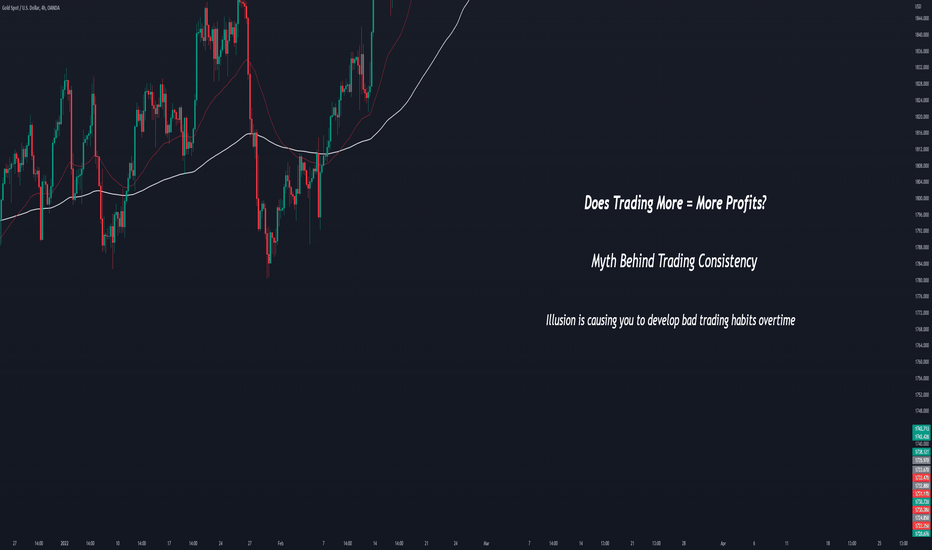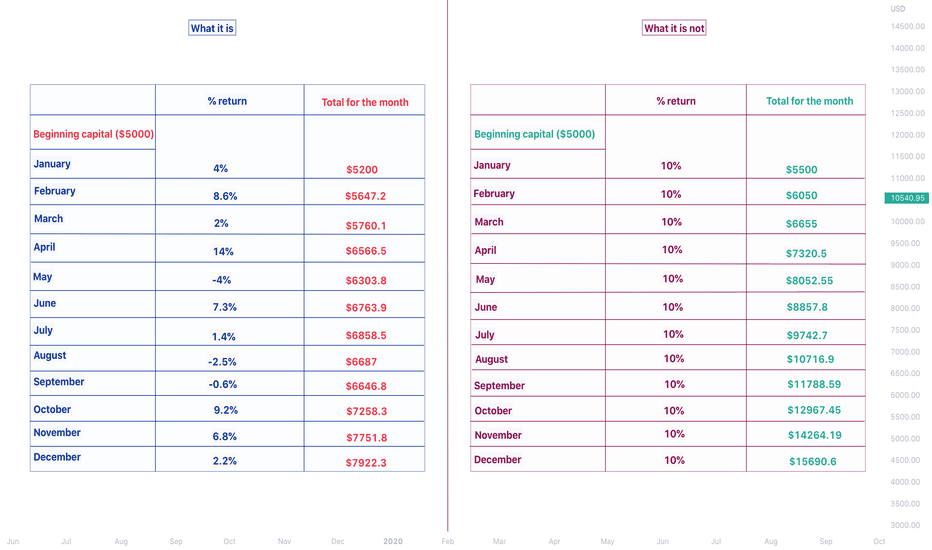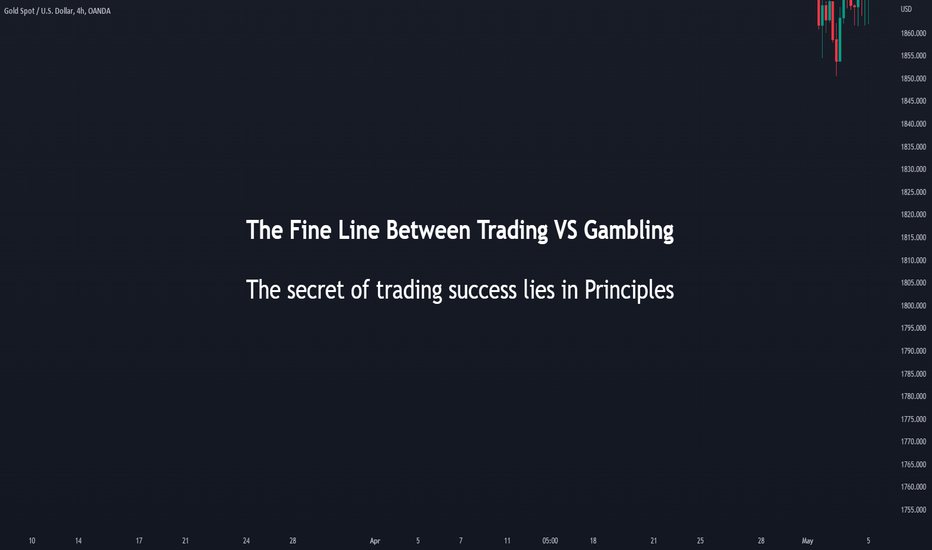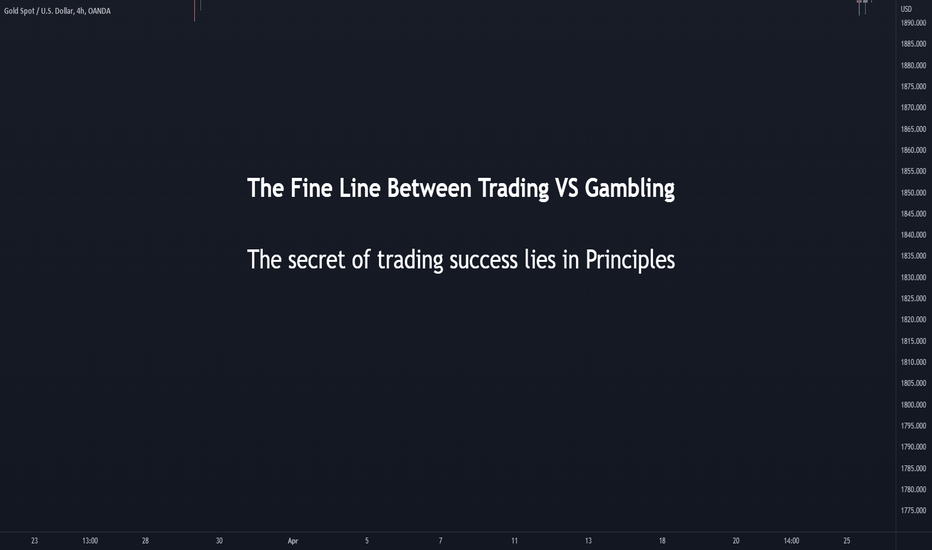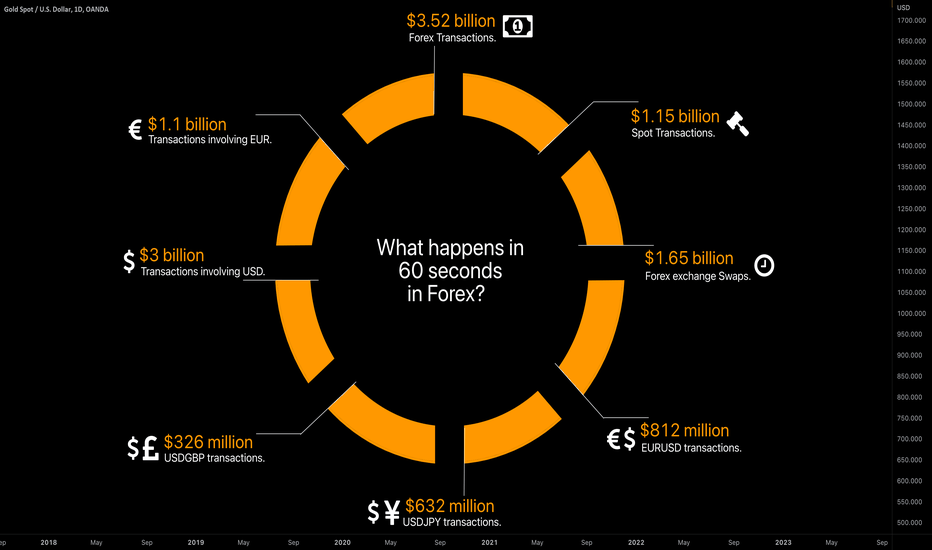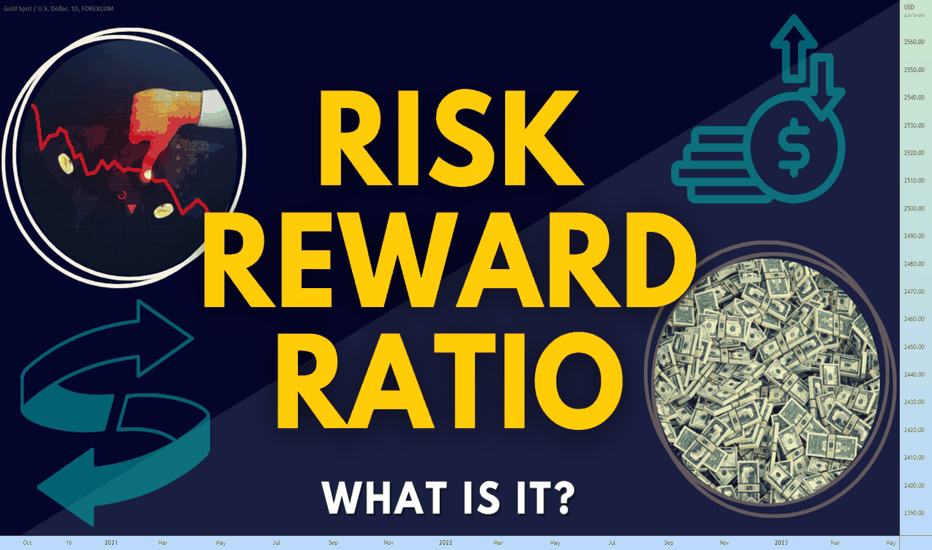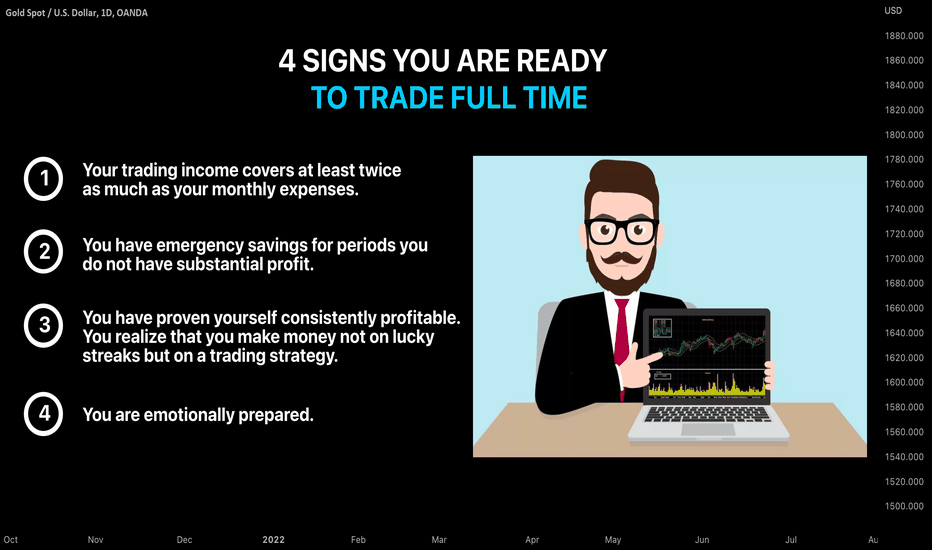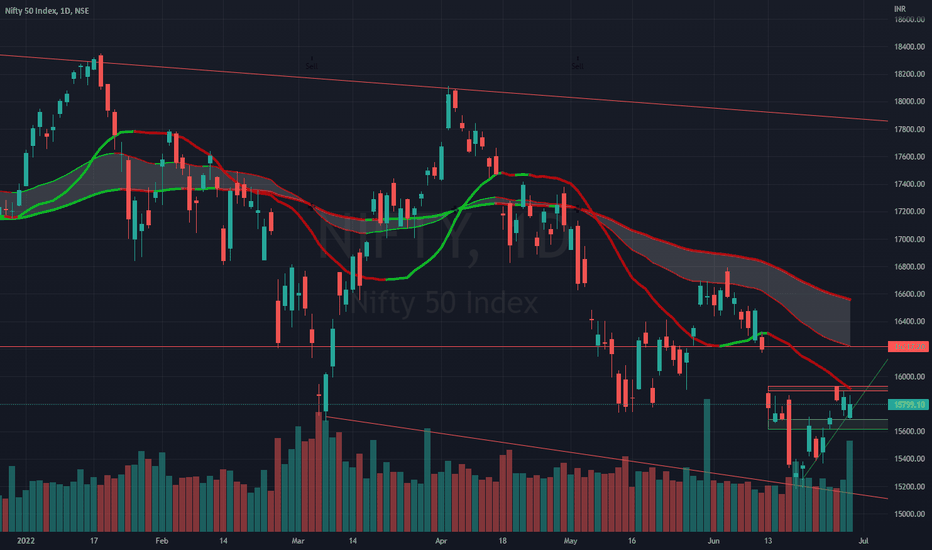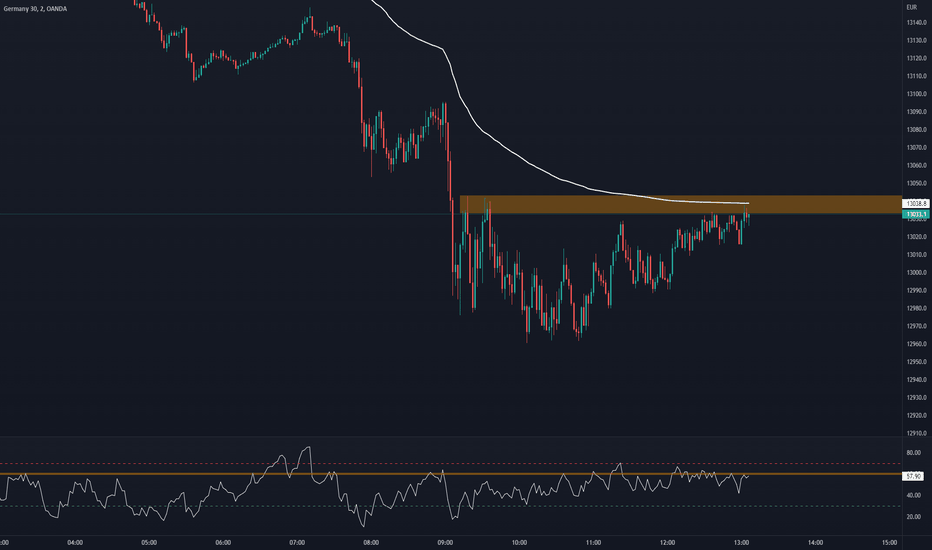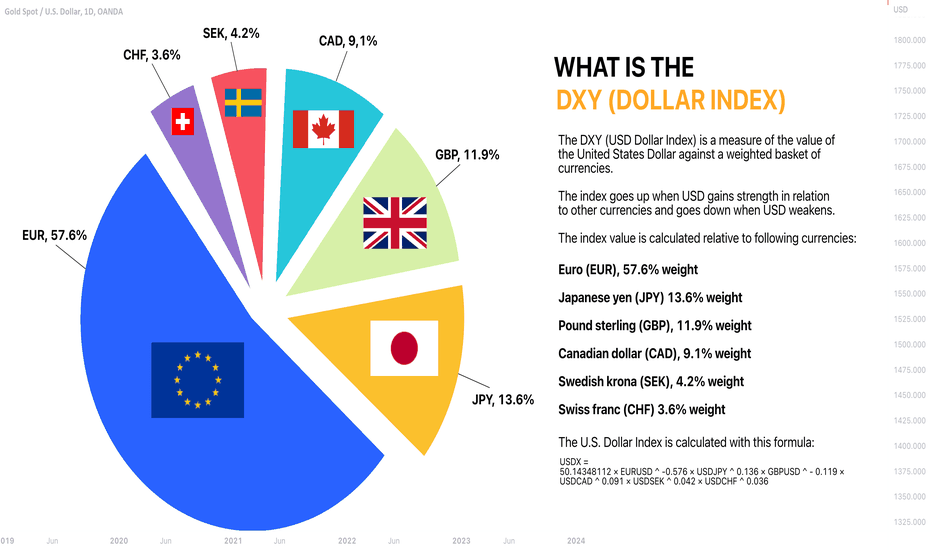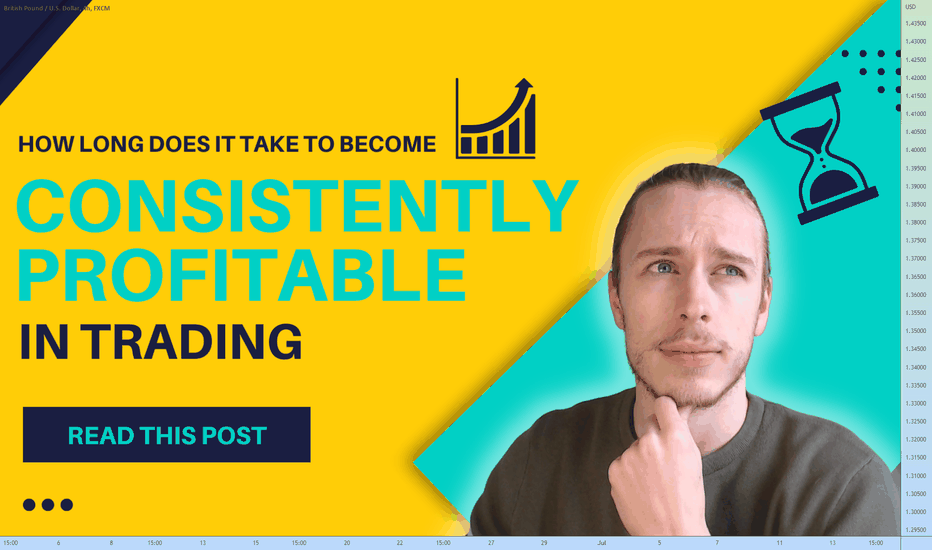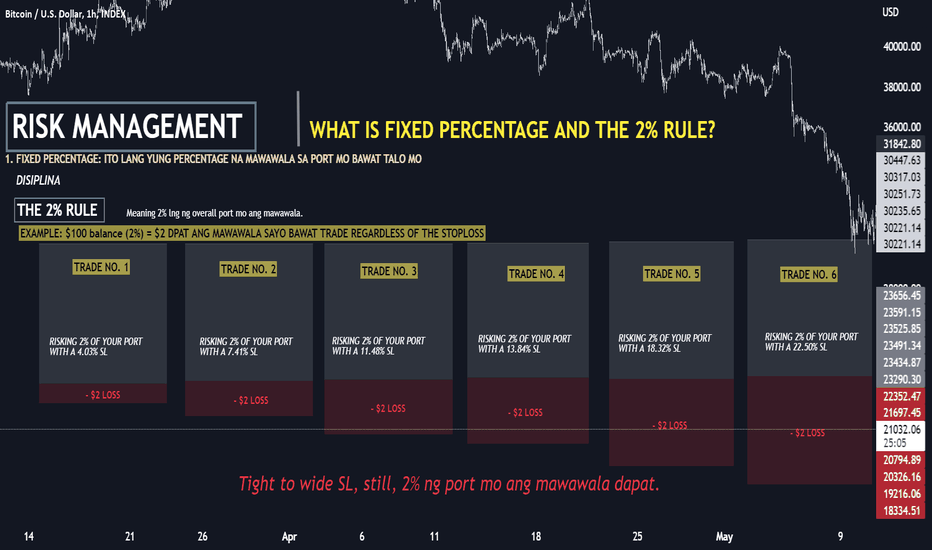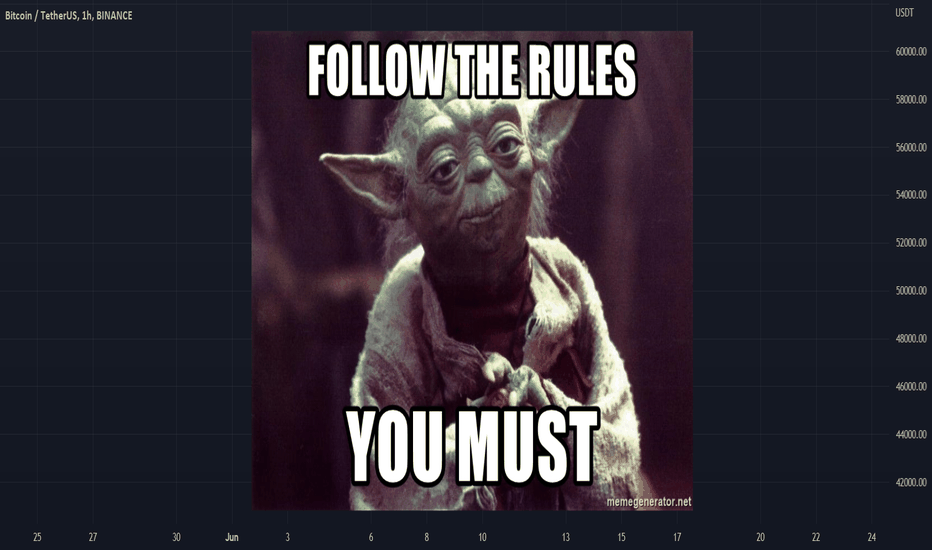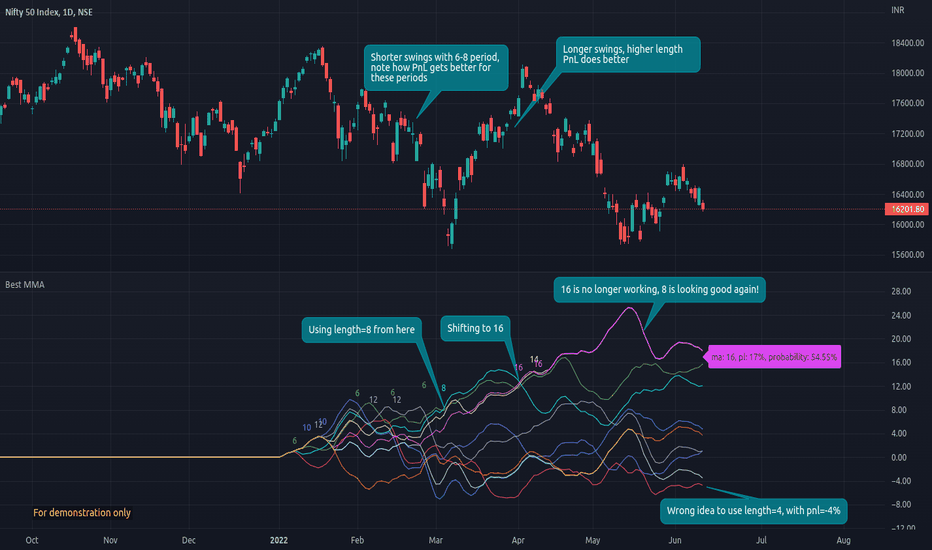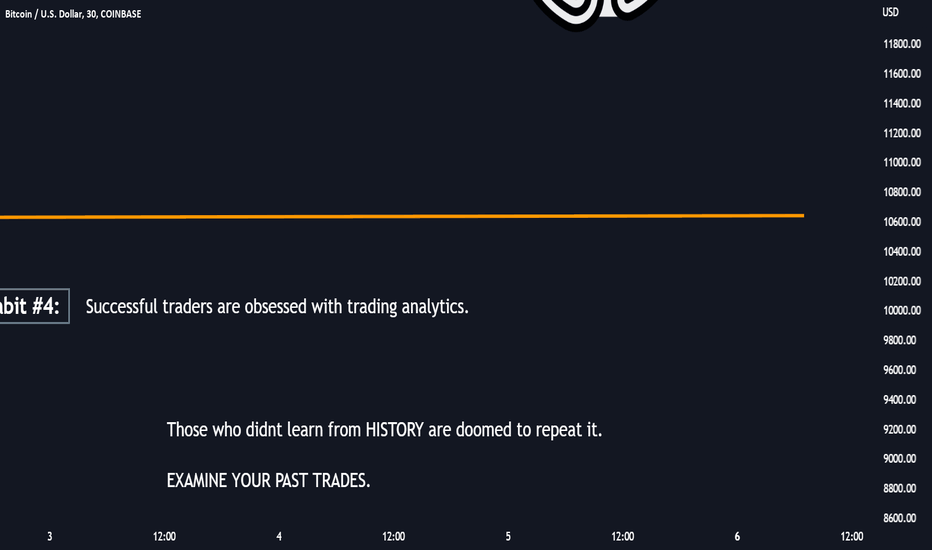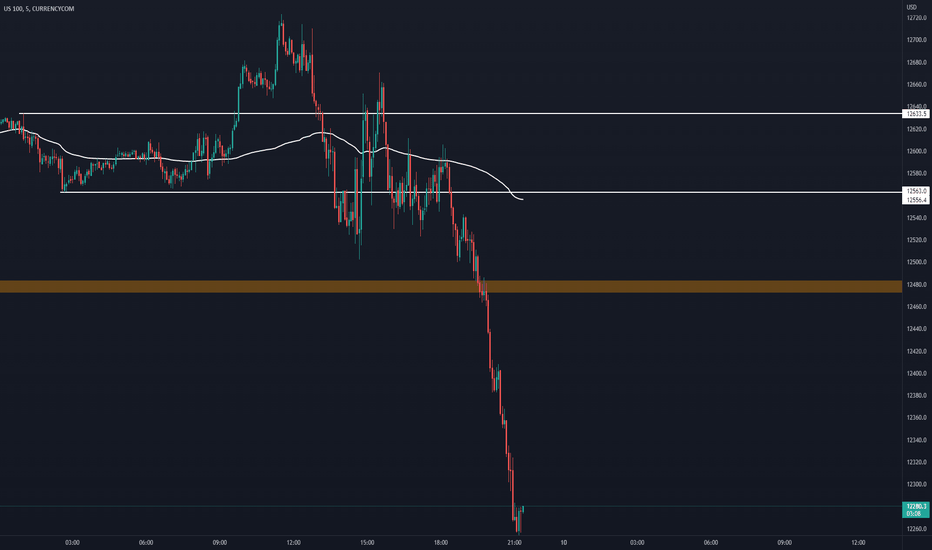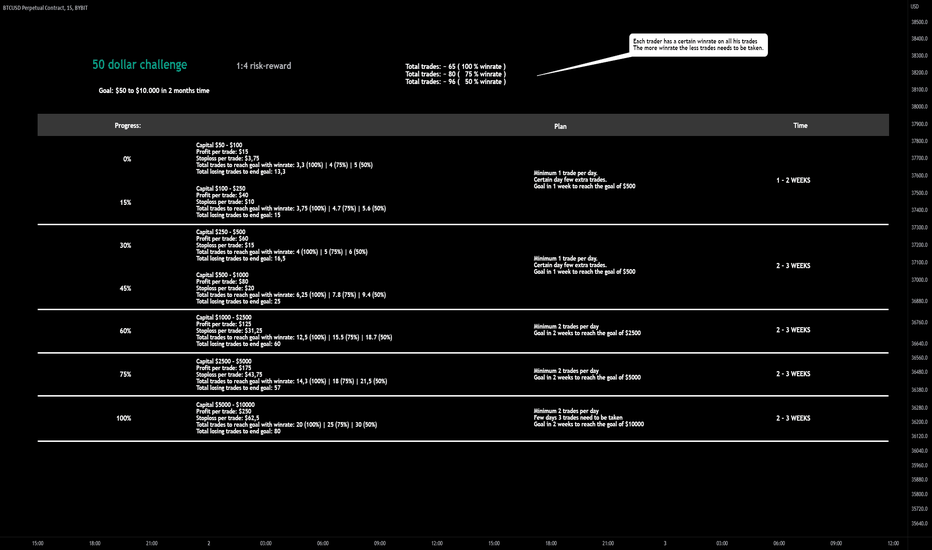Does Trading More = More Profits?Seems like most of the Traders think that by trading more = more profits.
The answer to this can be two-dimensional.
Yes, theoretically the more you trade means you could make more money. If we simply do the math, day trader should be making more than swing trader/ long-term investor right?
But why the failure rate of short-term Trader is much higher than swing Trader & long-term value investors?
The key element here is emotions.
Let me share some examples here:
• Trader A is a swing Trader. On average he takes about maximum 5-10 positions per month
• Trader B is a day Trader. On average he takes about 5-10 positions per day
In this case, let's put performance asides, but who do you think will have less emotions involved in their decision making process? Definitely Trader A.
When you're taking less trades, means each time before you get involved in any position, you spend more time on your planning process, you are aiming for quality rather than quantity.
When you have more involvement in the market, you have a higher probability of over-trading, over-thinking, and over-reacting.
I'm not here trying to blast daytrading isn't profitable, it is in fact profitable. But most retail Traders take large numbers of unnecessary trades which elevate their risks, causing them not able to achieve profitability over the long-run.
When you lose a trade, you have a tendency of revenge trading. The more trades you lose, your irrational thoughts creates hope and ego, believing that you cannot be wrong.
The devil behind all these bad trading habits is purely illusion, the illusion of "This is going to be the best trade" OR "What if i don't take this and it turns out to be a winning trade?"
CEOs', Hedge Fund Manager, etc... They are all paid generously to make a small quantity of quality decisions, not to take large numbers of poor decisions. The same goes to trading, market will reward Traders who understand Risk Control and Trade Management.
The lesson here is to never rely on luck & hope in your trading. Instead, put more focus on your discipline and planning process. The more you are able to disregard the market noises, the better you perform.
Trading Plan
100% win rate strategy is possible!! Technically[ ]100% win rate is not possible but 100% no loss is possible. I know what you guys are saying right now,"What the hell,isn't both of these are the same thing".Well you're not wrong. What about 100% profit and 100% no loss,is it still the same? No they are not the same.
[ ]100% profit means 100% no loss but 100% no loss is not always 100% profit. With 100% no loss you can still have 0% profit.
[ ]Suppose you have 66.66% win rate strategy means you will win 66.66 and lose 33.33 out of 100 trades. So if we can do something about those 33.33 trades we can actually achieve 100% profit and that's where no loss strategy comes in. So technically we can achieve 100% win rate Holy-Grale strategy.
[ ]Another example of the importance of no loss strategy is:
Suppose,Sam who is a new trader has a normal strategy of 66.66% win rate.In first session of 100 trades he wins 66 trades in row and next 33 trades he loses in a row. In next session of 100 trades he first loses 33 trades in a row, as of now he is back to square one. But that's not possible, that's why trading is not gambling.Even if it's not possible suppose now he has the no loss strategy he will never go back to square one.He will now have constant profits like the 5% of traders who makes profits.
[ ]I have already found my own 100% win rate/Holy-Grale/100% no loss strategy.Well not 100% but 99.99% no loss strategy because of price spread, fat finger mistake etc. The name of my strategy is SSS-Grade Strategy v888.088. I made it for 5 minutes timeframe and improved over 2 years,so yeah it can work in any higher time frame.My strategy works in range or trending market but only in crypto.I have combined 3 strategies into one strategy.
[ ]One is for support and resistance zones which act as support of my SSS-Grade Strategy just like human leg support weights.You can see how accurate these support and resistance zones in my previous ideas and below.Few days ago I posted my idea about ethereum short 1hr TF, after a few minutes someone named ****amer69 also posted a Idea about ethereum long 1hr TF.Because we both are support and resistance traders it was fun and exiting experience. If this idea gets 10000 likes and 10000 followers I will post few tips and tricks about support and resistance and his support and resistance mistake.Well joke aside I may do it in the near future.
[ ]The heart of the SSS-Grade Strategy is my confirmation strategy. It consists of 7+ plus rules. So its easy to make fat finger mistake in my phone cause I don't have a pc.
[ ]Lastly the brain of my SSS-Grade Strategy is no loss strategy.As the name applies, it takes me out of the losing trade with no loss.Sometimes with very very small profit or very very small loss.It's also work great for dynamic take profit like supertrend, atr stoploss etc
[ ]As for the proof of my SSS-Grade Strategy you will see as I write more ideas with my strategy.
[ ]So what I am trying to say is,its not technically impossible to make 100% win rate strategy. So all the traders, youtubers please make some videos or post about it and that can be great help for the trading community cause I didn't see any no loss strategy as of yet.
[ ]P.S: You will not find my SSS-Grade Strategy anywhere in the Internet.
Unraveling the bitter truth about compounding in trading"I'll start with $100 and flip it to $10k" is one of the lies we tell ourselves when we first start trading. Although compounding can do some wonders, without realistic expectations and targets, you will not reach your goal.
Illustrated on the chart, we can see a sincere and a deceitful statistical representation of a compounding system based on a year-long tracking. All numbers depicted in percentage-based returns are for example purposes. For both cases, we will have a $5000 beginning capital to work with.
Looking at the left hand-side of the screen where the realistic statistics are, we can observe that the ROE (return on investment) numbers differ from one month to another. Some months result in a small loss, some are in deep profits and so on. Just like every single trade, every single month should result in the following:
- A big win
- A small win
- A small loss
- A breakeven
On the contrary, looking at the table portrayed on the right side of the screen, we can see a blurry image of compounding. Expecting to make a fixed return of 10% every single month is nice, but unrealistic. No matter how well-backtested your trading strategy is, in the world of business and finance, nothing is 100%. Plus, there are several factors influencing our trading life: changing market conditions, negative impact of the surrounding environment on our everyday lives and so on. What we are trying to emphasise is that mentally and psychologically, it is impossible to make huge returns consistently on a monthly basis.
The bottom line: have a trading plan that fits your lifestyle the most, be disciplined, risk-tolerant, cold-blooded. And most importantly do not rush the process, as good things come to those who wait.
The Fine Line Between Trading VS Gambling - Important LessonHi Traders. This is the video edition of yesterday's workshop.
I genuinely believe this is one of the very important topic that we MUST all learn - identifying the distinct differences between trading VS gambling.
Recap
Most Traders put way too much attention on indicators.
Indicators are supposed to assist us with our decision making process, but if at any point you feel like some of the indicators are burdening OR paralyzing the way you make effective decision, then its probably time for you to eliminate them,
At certain of your trading journey, you'll need to focus on subtraction, rather than addition.
Novice Traders come into the market with the mindset of "I want to learn and know as many things as possible" , all they're trying to do is to absorb like a sponge.
Experienced Traders understand that less is more.
The more you know what's not for you, the better you perform, and the better you're at avoiding distractions.
Do you really think anyone can be successful purely through knowledge and experience? and does knowing more means you're more knowledgeable?
What is the true definition of knowledge? The way i define a wise person is when they understand what's good for them and what's bad for them.
The secret of trading success lies in Principles.
The way you create a plan, rules and principles, then execute them relentlessly.
Remember: The fine line between a Gambler and a Trader, is a plan.
Gamblers gamble without a plan, while Traders gamble (anticipate the future) by having frameworks, plans, rules, and principles.
The Fine Line Between Trading VS GamblingMost Traders put way too much attention on indicators.
Indicators are supposed to assist us with our decision making process, but if at any point you feel like some of the indicators are burdening OR paralyzing the way you make effective decision, then its probably time for you to eliminate them,
At certain of your trading journey, you'll need to focus on subtraction, rather than addition.
Novice Traders come into the market with the mindset of "I want to learn and know as many things as possible" , all they're trying to do is to absorb like a sponge.
Experienced Traders understand that less is more.
The more you know what's not for you, the better you perform, and the better you're at avoiding distractions.
Do you really think anyone can be successful purely through knowledge and experience? and does knowing more means you're more knowledgeable?
What is the true definition of knowledge? The way i define a wise person is when they understand what's good for them and what's bad for them.
The secret of trading success lies in Principles.
The way you create a plan, rules and principles, then execute them relentlessly.
Remember: The fine line between a Gambler and a Trader, is a plan.
Gamblers gamble without a plan, while Traders gamble (anticipate the future) by having frameworks, plans, rules, and principles.
What is Forex and How Big It Is?💱
Forex - foreign exchange market, is a location where international currencies are bought and sold by economic participants at various exchange rates.
Forex market is the biggest market in the world, reaching on average 6 trillion dollars trading volumes daily.
Forex market is a vital element for a global economy because it provides capital exchanges between the countries.
The main market participants of forex market are central banks, commercial banks, commercial companies, hedge funds and investors.
🕰In order to grasp how big is that market, take a look what is happening on that just in 60 seconds:
📎Total transactions value reaches 3.52 billion US dollars.
📎 1.15 billion dollars of spot transactions.
📎 1.65 billion dollar of exchange swaps.
📎 Total transactions value involving USD reaches 3 billion US dollars.
📎 Total transactions value involving EURO reaches 1.1 billion US dollars.
📎 Just one single EUR/USD pair accumulates 812 million US dollars transactions value.
It is hard to imagine how such big amounts are rolling with such a frequency and how insignificant are the orders of individual traders.
❤️If you have any questions, please, ask me in the comment section.
Please, support my work with like, thank you!❤️
Become a better trader by just answering these questions!Hey Traders!
Most people think that trading success is found within a system... yet a successful trading system could be something as simple as 2 or 3 basic combinations, knowledge of price action and a sprinkle of instinct.
To me successful trading is a completely different path, I believe that real trading success falls into one sentence which is "Constant and never-ending improvement",
self-improvement that is, and in today's post, since it is the weekend, I want to go over this core improvement process with you so you too can become a better trader next week!
First to make it clear, I believe that out of the 100% required for trading success the system part falls into the low 10%, while the other 90%+ is within you, it is your knowledge, knowhow, instinct, mindset and everything else that makes you... you. The system is something you learn once and all you have to do is follow it forever with consistency and focus, sounds simple right? It kind of is but we humans tend to make it complicated.
Anyway, its Saturday the 9th of July and I want to give you 6 questions that if you answer will make you better by at least 1% right away, but if you continue to answer these questions each time you will, guaranteed no matter what (as long as you are honest) get better by 1% each time, how much better you become in entirely up to you, and by that I mean how honest you are and how consistent you are in answering these questions!
So, without anymore delays, here are the 6 questions that can make you a better trader:
What was my biggest loss and why?
What was my biggest profit and how?
What was the best thing I did this week?
What am I most excited about for the upcoming week?
Did I follow my system on every trade?
Was I in control of my trading, mentally, every time I traded?
BONUS QUESTIONS:
What prevented me from doing better?
What motivated me most?
What will I not repeat next week?
What will I repeat next week?
What do I want to remember it for?
What is the best highlight?
What do I regret not doing?
Do you have any of your own questions that could help other traders? - Do share in the comments!
Boredom Trading Could Be a Killer To Your ProfitabilityMost of the retail Traders are mainly day trading. And one of the trickiest part about short-term trading, is the amount of screen time we're putting in VS the amount of action we're taking.
On most days, i spend about 12-15 hours everyday sitting infront of the chart. only 15 - 30 mins of them are spent on clicking the buy & sell buttons. So if you do the math
30mins/ 720mins = 4.2%
Only 4.2% of my time is spent on taking action, the rest of 95.8% are spent on waiting, planning, testing, reviewing, assessing, studying, etc...
So now ask yourself a few questions:
1. How much of a portion of your time is spent on taking action?
2. How often do you over-trade OR revenge-trade?
3. How does impulsive trades affect your consistency?
I believe the best Traders have the highest ability to sit with their hands.
The ability to look at a high volatility market environment and say "no", and yet only focus on your plan should be the end goal of us as a day trader.
There are countless of market opportunities everyday, but how many of them are meant for you?
Risk:Reward Ratio. What is it?Risk to reward ratio. What is it? What does it mean and how do we use it?
Now, if you made it to the point where you're here on TradingView, there's a good chance that you have heard about Risk to Reward ratio. Today, I want to dive into what it really means and how to actually utilize it. I see so many beginners missing out on huge profits and opportunities because of their risk reward ratio and I want to share my knowledge of this tool and how to actually use it in the future.
Firstly, let's dive into what is the risk/reward ratio? The RR ratio is a tool that can accurately predict by expected returns based off of previous results. This tool measures how much reward you are estimated to gain based off of the dollar amount you risk. For example, if you have a risk to reward ratio of 1:3, it means for every $1 you risk, you will gain a return of $3 in the event of a positive trade. Using the same example in the FX market, let's say you're risking 10 pips on EURUSD, your take profit is at 30 pips. This means you gain 30 pips in the event of a win, lose 10 pips in the event of a loss, giving you a 1:3 risk/reward ratio.
This is a very powerful tool because compared with the win rate and in correlation, you can actually predict based off of your previous results, you're expected returns on investment. Being able to predict what you're expected returns are are great way of giving you milestone targets, but also when you're looking at getting funded with prop firms, you also know what you are actually able to achieve in what time frame.
Now, it goes without saying, the higher your risk to reward ratio, the less you need to win in order to maintain profitability. The opposite, the lower your risk reward ratio, the higher win rate is required to maintain profitability.
But this is where we get into where I find beginners struggle. A lot of people will base their strategies on their risk/reward ratios, which is understandable if you're building the strategy from scratch. If you're using a prebuilt strategy or something that doesn't really correlate with risk/reward ratio. Then it makes it obsolete and just confusing. Going back to my first point, risk to reward ratio is a tool that you can use to estimate future potential returns based off of previous results. Let's say you have 100 trades worth of data. You can accurately have a look at what is your risk to reward ratio is and compare that with your win rate. From there you can make a decision whether or not that is a profitable strategy. On top of that, you can then start to look to improve either your win rate and risk to reward ratio, knowing that that is an area that needs improvement.
When it comes to improving your risk to reward ratio, one thing that always grinds my gears with traders, is when they enter a trade, they'll set their stop loss and take profits based on their risk to reward ratio not based on the actual analytics of the trade. While I understand this and with some strategies, this can work. For most, they end up setting those take profits in areas that is just realistically is going to be really hard for the price to get to. What professionals do when trying to improve the risks of reward ratio is only take those setups where a good take profit is viable around that level of risk to reward.
For example, in this chart, we are looking at buying the USDCAD over the next couple of weeks. We like this setup. We've had our entry signal and we're going to place a stop loss below that recent low, which was created early last week. We are not happy with our risk to reward ratio. We think we're leaving too much profit on the table and want to increase our overall results. So I'm only taking trades that have close to a three to one risk to reward ratio. But as you can see by this chart that dotted lines are areas of resistance which we are going to have to break in order to achieve that level of profitability. There are 5 different zones we are going to have to get through in order for my take profit to be hit, it is fair to say the odds are not in my favor.
Now a beginner Trader will still enter this trade with the same take profit and the same stop loss and just hold on. The reason they'll do that is because they want the 1:3 risk reward ratio. They don't care where the profit target is. What matters is it is 3 times worth what they're risking. On the other hand, A professional trader will actually either let this trade go and not enter it, or look for another entry point later on on smaller timeframes to where you can fit that risk to reward ratio and you're not going to hit the high levels of resistance.
To sum up what my point is, risk to reward ratio is a very powerful tool to understand what you are capable of the trader and also where you can improve. It is not a valid take profit selection strategy. Yes, it can definitely help with guidelines on where to set your take profit, but it should not be the sole reason your take profit is set at a certain price just because it is X amount whatever you are risking. Have a look at what the chart is telling you and what your analysis is telling you. Then, only take the trades which coincide with the risk to reward ratio. You want to achieve.
I hope you enjoyed this insight and I hope it was beneficial to you. I recommend highly diving into your previous trading data. Have a look at your win rate. Have a look at your risk reward ratio and understand what your profitability expectation really is and base your future decisions off of that data. Have a fantastic trading we can I look forward to seeing your comments.
- Jordon
How to spot and avoid Stop Loss hunting: a complete guide Stop Loss hunting happens every trading day, and it's not something you would want to let fly under the radar.
We have carefully orchestrated some examples on the graph to give a clear picture of what this phenomenon really is, and listed some tips on how to avoid getting into this mouse trap.
In basic terms, Stop Loss hunting is the strategy of the price action spiking above/below key levels to enter the pool of Stop Loss orders and take the masses out of their positions before moving the price in the destined direction.
Looking at the first example, we can observe that a nice double top pattern has been formed. This is one of the clear indicators that the price might potentially drop after failing to rise above and forming a new top. Thus, a trader would most likely go short and set his Stop Loss a few pips above the freshly formed area of resistance. What happens next is obvious - a trader gets liquidated. Why? because him and tens of thousands of other market participants had set their Stop Losses at a very obvious key level - above the local zone of supply. After successfully spiking up and grabbing some liquidity, the price peacefully continues its bearish movements in the predetermined direction.
The second example is a similar one as well. "What a beautiful ranging market. Let's buy at support and sell at resistance." Only if it was that easy...
What happens next, the price spikes below the lower boundary of the sideways-moving range and grabs liquidity before moving in the upside direction.
Stop Loss hunting scenarios will always happen, and to be honest, we cannot really avoid them all. However, there are some tips that we can follow in order to evade these traps.
Firstly, you should never rush into entering positions. Eventually, the price will come to your levels and develop into some patterns (Double Top, Head&Shoulders etc.) before starting its big moves.
With that being said, no FOMO either. There will always be fish in the sea, just like there will always be opportunities in the market. Be patient, cold-blooded, and wait for your time.
Do not set a tight Stop Loss, because you will most likely get taken out immediately. Either set a wide one so you can escape hunting in case the price starts spiking up and down, or wait for cases of a fake breakout a.k.a liquidation before entering a position.
Last tip is a pretty smart one: set your entry orders at levels where masses would put obvious Stop Loss orders. Then, you will notice how many times the price goes in that direction.
Hope you enjoyed this Educational Post, dear TradingView community members! If you have any suggestions or recommendations for the next educational idea, feel free to let us know in the comment section below.
Are You Ready to Trade Full Time? 4 Essential Signs ⭐
Hey traders,
Once you mature in trading and become a consistently profitable trader, the question arises: are you ready to trade full time?
Becoming a full time trade is a very significant step and my things must be taken into consideration before you make it.
✨Becoming a full time trader implies that you quit your current job, that you give up a stable income - your salary.
In contrast to classic job, trading does not give guarantees. Please, realize that such a thing as stable income does not exist in trading.
Trading is a series of winning and losing trades, positive and negative periods. For that reasons, remember that in order to become a full time trader, your average monthly trading income must be at least twice as your monthly expenses.
✨Moreover, even if your trading income is sufficient to cover two months of your life, that is still not enough. You must have savings.
Trading for more than 8 years, I faced with quite prolonged negative periods. One time I was below zero for the entire quarter.
For that reason, supporting a family and living a decent life will require savings that will help you not to sink during the losing periods.
✨Another very important sign is your correct and objective view on your trading. Please, realize that if you bought Bitcoin one time and made a couple of thousands of dollars, it does not make you a consistently profitable trader. Please, do not confuse luck with the skill. Your trading must be proven by many years of trading.
✨You must be emotionally prepared for the living conditions that full time trading will bring you.
Being a full time trader implies that you are constantly at home,
you work from home from Monday to Friday.
You do not see your colleagues, your social life will change dramatically.
I know a lot of people who started to trade full time and then realized that they can not work from home for different reasons.
⭐So what are the necessary conditions for becoming a full time traders:
you should have savings that will cover the negative trading periods,
your average monthly trading income should be at least twice as your monthly expenses,
your trading efficiency must be proven by objective, consistent results,
and you must be psychologically prepared for working from home.
When these conditions are met, you can make a significant step and become a full-time trader.
Are you ready to become a full time trader?
❤️If you have any questions, please, ask me in the comment section.
Please, support my work with like, thank you!❤️
Risk Control - Think Beyond The BasicsHi Traders. Let's talk abit about Risk Control/ Risk Management today.
I believe most Traders may be thinking that Risk Management/ Risk Control is about
- Having a pre-determined risk (% Risk-per-Trade)
- Having a Stop Loss
Well, that's correct to a certain extent. But if you really think about Risk Control, do you think its really all about that 1 - 2% risk per trade?
Look, most of us got the meaning wrong. Let me share some examples:
1. You took 3 losses on GBPJPY, all 3 of them are shorts with the same trade setup. Yes, even if you are only risking 1% per trade, but aren't you now risking 3% on the same setup?
2. You took 3 positions (GBPUSD Long, AUDUSD Long, EURUSD Long). All 3 of them are positive correlated, so if one of it goes wrong, it is likely that all of them will be wrong.
3. You took 5 positions at the same time. Why do you have to expose yourself to that amount of risk?
The point I'm trying to tell you is, often we really do not have to put ourselves at that high level of risk to generate a decent return.
The way i do it, is i enjoy taking one trade OR maximum two trades at a time. So instead of having the frustration to worry about all those correlation. I make sure the positions I'm involved are almost non-correlated.
Then if any of my position goes well, I can always scale into it. In that way, I maximize my winner, minimize my loser.
If you enjoy the content, make sure you follow my profile and click the like button.
Take care and trade safe.
All the content I've posted are for educational purposes, please perform your own research and only take it as a reference.
(Tutorial) World Markets & their affect on Indian Stock Market!Hello Traders/Investors,
Lets learn World Stock Markets and How it affect us in India on Daily/Weekly and even on long-term basis.
Note: this topic is specifically for Traders (specially Day traders) and also Investors might find it interesting read.
- US is called mother market and we're (i.e. Indian stock market) child market.
- US market gives a queue on how world and our market would perform based on it.
- Sectors like Banks (Dow Jones Bank index) n Tech/IT (NASDAQ) work pretty hand in hand with rest of world in terms of giving us a idea of direction towards which sector can have chances of moving by how much %age today.
- - SGX Nifty , its a Nifty's Future contract which is traded in Singapore Exchange and gives a good idea on start of our markets. SGX Nifty timings : 6.30 AM to 11.30 PM
- Asian markets specially South Korea, Hang Seng n Japan market we should watch carefully in morning to track the direction of markets. We belong to pretty much similar basket.
- European Markets, CAC, DAX and FTSE we should get a median of these 3 exchanges to know how much %age they're moving. Just an observation here, our Indian markets usually stay closer to DAX movement.
- Emerging markets (short form : EMs) : Emerging markets generally do not have as highly developed market and regulatory institutions as those found in developed nations. Market efficiency and strict standards in accounting and securities regulation are generally not on par with advanced economies (such as those of the United States, Europe, and Japan).
- Some of the most rapidly emerging countries include Brazil, Turkey, Russia, India, and China. Also some oil rich nations are also part of this list.
- To get a holistic picture of world markets.. get a queue from yesterday's closing of world markets specially US alongwith US futures which are very important.
- Then, in mornings look at Asian Markets n SGX Nifty to understand where our markets might open. Around afternoon when European markets open you get an idea where our Indian market might stabilise n close. Also, we can look at European futures to get idea on where Euro markets might open.
- Lastly macro economic data like Commodity prices specially Crude oil , USD INR n Dollar Index give a clarity on the markets. Higher Dollar n lower Rupee would cause panic in stock markets usually. Similarly, higher crude oil prices indirectly reduces countries foreign reserves n also affect business due to rising transport costs causing more expenses n less income.
- Cryptos movements can also affect markets now days, a big downmove on cryptos n hit many stop losses n cause for margin calls n hence companies might have to liquidate other assets of individuals like stocks etc. go get back their money.
- Honest mentions: Sometimes some macros are in news, then in those days stock markets start mimicking their charts.. it can b currency pair USDINR , US 10yrd BOND yield, Crude OIL sudden surge or drop in prices and most recently, NIFTY is pretty closely mimicking the US30 futures chart trend on day trades.
- My personal hack: I do all my Technical Analysis on these charts n not just on NIFTY and BANKNIFTY etc. I draw all the Supply n Demand zones, Channels, Trendlines etc. to get queues from them to implement it on my trading in Intraday in India. Usually it works like a charm!
World major stock markets timings in IST (i.e. Indian Standard Timings) :
North America Stock Exchange Timings:
Country Stock Exchange Opening Time (Indian Timing) Closing Time (Indian Timing)
US NASDAQ 7 : 00 PM 1 : 30 AM
US NYSE 7 : 00 PM 1 : 30 AM
Canada TMX Group 8:00 PM 2:30 AM
European Stock Exchange Timings:
Country Stock Exchange Opening Time (Indian Timing) Closing Time (Indian Timing)
UK London Stock Exchange 1 : 30 PM 10 : 00 PM
European Union Euronext 12:30 PM 9:00 PM
Germany Deutsche Borse 12:30 PM 2:30 AM
Switzerland SIX Swiss Exchange 1:30 PM 10:00 PM
Spain BME Spanish Exchange 1:30 PM 10:00 PM
Asia-Pacific Stock Exchange Timings
Country Stock Exchange Opening Time (Indian Timing) Closing Time (Indian Timing)
Australia Australian Security Exchange 5:30 AM 11:30 AM
Japan Japan Exchange Group 5:30 AM 11:30 AM
Hong Kong Hong Kong Stock Exchange 6:45 AM 1:30 PM
China Shanghai Stock Exchange 7:00 AM 12:30 PM
China Shenzhen Stock Exchange 7:00 AM 12:30 PM
Taiwan Taiwan Stock Exchange 6:30 AM 11:00 AM
South Korea KRX Korean Exchange 5:30 AM 11:30 AM
India NSE and BSE 9:15 AM 3:30 PM
You can google n find most of Live market details on many websites, I usually enjoy Investing .com for their simple UI and charts.
Please take all positions at your own risks and these are my personal views on analyzing markets. I'm not responsible for any losses incurred by you!
Regards,
Anshul
Improve your trading skills with PTAHey Traders!
In this video we talk about Post Trade Analysis which we believe it probably the best way to develop your trading skills, trading system and general instinct of trading.
Today we traded the DAX for 2 hours with complete focus, focus is a vital requirement for trading success as it allows you to be present and disciplined to follow your trading rules and system.
The video explains some things we did good and some things we did bad, of-course the good should be repeated in the next trading session, the bad either improved or removed!
Do you do post trade analysis? - Let us know in the comment section below!
Have a fab day!
Learn What is U.S. Dollar Index (DXY) 💵💲
Hey traders,
I share my analysis, signals and forecasts on Dollar Index occasionally. Quite often I receive questions from you asking me to explain what exactly that index means and why it is so important.
Dollar Index (DXY) is a measure of the value of the United States Dollar against a weighted basket of major currencies.
This basket consists of 6 following currencies:
🇪🇺Euro (EUR) - 57.6% share
🇯🇵Japanese yen (JPY) - 13.6% share
🇬🇧Pound sterling (GBP) - 11.9% share
🇨🇦Canadian dollar (CAD) - 9.1% share
🇸🇪Swedish krona (SEK) - 4.2% share
🇨🇭Swiss franc (CHF) - 3.6% share
The selection of the following basket of currencies and their weight is determined by the significance of a trading partnership between the countries.
The index value is calculated with the formula:
USDX = 50.14348112 × EURUSD ^ -0.576 × USDJPY ^ 0.136 × GBPUSD ^ -0.119 × USDCAD ^ 0.091 × USDSEK ^ 0.042 × USDCHF ^ 0.036
The index was launched in 1973 and had an initial value of 100.
When the U.S.D is gaining strength against the above-mentioned currencies, the index is growing, while its weakness against them leads to a decline of the index value.
To conclude, the Dollar Index reflects a fair value of the Dollar and its dominance in global markets. Its analysis may help to make more accurate predictions of the future direction of the dollar related instruments.
Do you analyze DXY?
❤️If you have any questions, please, ask me in the comment section.
Please, support my work with like, thank you!❤️
Consistent Profitability, how long does it take?How long does it take to become consistently profitable as a trader? This is one of the most searched questions in the Internet when it comes to trading and the beauty is there's no right answer. When you do receive an answer, it's miss leading to beginners and everyone gets confused. There's a solid chance that you've looked at this before, or perhaps you just seen the title of this post and clicked on it. How long this is going to take you to master the arts of the market. There's a good chance you sat there and questioned, "what am I doing? how long are we going for? What should I be goal setting in terms of time with trading?" if you see yourself in this position or you've seen it previously, I finally have the answer you need to hear.
How long does it take you to become consistent and profitable trading?
As long as it takes.
There's so many different sources which claim so many different time limits that it takes to master Forex trading or crypto trading or industry, trade, whatever it might be your embarking on. All of them say the same around two to three years to become a consistent and experienced professional. Yet, where are they getting this data from? I know traders that master trading within six months. I also know other traders that traded for six years and couldn't get the look of it. There's no time frame to put on trading in terms of success and consistency. It isn't a university course, we don't sit down and do all the course procedures and even if we do, the bare minimum, still graduate in three years. That's not how trading works.
The question you should be asking isn't how long is this going to take me to master, but rather how many hours are you going to put into it. Day in, day out, how much work are you going to do? That is what will determine how long it takes you to become successful in this industry. There's so many people that will see 2 and a half years to become successful trader, then they trade half heartedly as if it is a hobby. They don't concentrate too much. They just trade here in there. Two and a half years pass and they'll call themselves seasoned professionals because they have been in the market for 2 1/2 years. Yet they couldn't show a single piece of consistency within their trading. Then there's other traders that put in hard work. I'm talking 8 hours a day of pure grueling backtesting, trade management, risk management, analyzing everything, and they put an exponential amount of work in and in six months they can outperform anyone else who's ever step foot in the market.
Time is not an important factor. The amount of work you are putting in is the important factor. Yes, time will tell whether or not you can be successful in this industry, but if you're measuring time based off of when you've been interested or when you've been trading a little bit and rather than the actual hard, grueling hours that you're putting into trading. Then you will never get to that level you want to get too. You have to put in the hard yards.
This industry is very advertised as easy, simple and the money making machine. There's a number of different factors in which we can blame for that, but we're not going to dive into that today. What I want to share with you is this is not easy. This is actually one of the hardest professions you could ever do, because work doesn't just stop, we don't just clock off and get paid the same amount every week. It's all dependent on the amount of time and effort you put into the market.
Do you want to be profitable and consistent in trading? Then put in the hard work. Stop Googling how long it's going to take. Stop having a look at other people's success stories. Knuckle down and put in the hard work. Then in two years, three years, six years, 10 years, whatever it's going to take. Look back and be proud. When someone asks you how long did it take you? Don't answer about six years or two years, be honest. How many hours did you have to invest? How hard was the work?
RISK MANAGEMENT [TAGALOG]As I always say, napaka importante ng risk management. I have explained it all in tagalog para mas maintindihan. I really hope marealize nyo ang importance neto sa magiging trading journey ninyo.
STOPLOSS IS A MUST, BUT STOPLOSS ALONE WITHOUT RISK MANAGEMENT is not a good habit and still you'll end up wondering with a negative PNL in the end.
FORMULAS are in there also.
Try doing the mathematics for your self.
I REALLY HOPE THIS HELPS!
Love,
Coach Dynati
4 Rules every successful trader should follow📈😎1. Trade according to the system.
2. Keep statistics.
3. Have strict risk management.
4. Adapt to the market.
Trade according to the system
When you trade without a system, it's gambling. Usually, when you ask a beginner why he has opened a position, he uncertainly begins to refer to the fact that someone gave him a signal, or that he thinks it's time for the coin to go in his direction.
Trading is a job in which discipline is rewarded. That is why every trader has his own trading system, which he follows in every trade.
It's like with the road rules, you can drive car without knowing them, but then you are almost guaranteed to get into an accident.
Keep statistics
Professional athletes constantly watch recordings of their performances and practice all the movements in front of a mirror, paying attention to every detail. It is vital to get better.
For a trader, statistics is a riddle that helps him learn from his mistakes. You should write comments on each trade, filter them by reason of entry or closure, track the average risk, average profit, percentage of successful trades and analyze each trade in detail on a tradingview chart.
Have strict risk management
Sometimes the market goes against you and you feel the full range of emotions – hope, anger, disappointment, despair. On such days, you will lose all your money if you do not have clear rules.
Set yourself a clear limit – no more than 3% of the deposit lost per day. For example, you have a deposit of $1000. You can't lose more than $30 a day.
In this way, you no longer risk falling victim to a spiral of negative emotions, you will begin to be more responsible in the trades you open, and you will be able to create financial stability.
Adapt to the market
Institutional players are always coming up with new ways to entice young players to invest in their coins, and technicians are developing increasingly sophisticated robots. That is why our responsibility as traders is to develop faster than them and to not stand still.
To do this, you need to monitor the market and watch which setups work best and which end up as traps.
An obvious example: during a bull market, breakouts work upwards, and downward breakouts are usually false. The same is true for the bear market – downward breakouts are cool, upward breakouts are deception.
In addition, you need to experiment with your trading algorithm and identify its weaknesses. Add new rules, test them, evaluate the difference.
Follow these rules and I guarantee that you will earn much more from trading, and the process itself will give you more pleasure than ever.
Good luck with your trades and see you in the DOM ✌️
Why doesn't technical analysis "always" work?A technical indicator could give a buy signal for a security with one set of values, and at the same time, could give a sell signal for the same security with a different set of values! How do you trust the indicators then?! Moreover, if a set of values works this time, the same set of values may not work the next time!
Technical analysis uses historical movements of a security to predict a probabilistic future direction or price of the security. By definition, technical analysis is probabilistic and thus its predictions are correct sometimes and go wrong other times. And we are aware of this uncertainty and are perfectly fine with it!. However, it is not possible for an indicator to describe the accuracy of its prediction. In the absence of that, basing our trade calls blindly on such predictions is as good as basing them on coin toss results. This article examines ways to assign an accuracy number to the predictions made.
Given this problem statement, the first thing that comes to our mind is backtesting. The results of backtesting give an indication of how an indicator has fared in the past. It is important to note that backtesting shows different results if applied to different timeframes (between two dates) or with different sets of values based on market behavior of that period. Our goal then is to know which set of values of all possibilities best suits a technical indicator for a given security for the current market conditions.
We all know that the price of a security doesn't move in a straight line! It keeps moving in a wavy pattern making highs (crests) and lows (troughs), both of short and long forms. Not only does the price change, but also the frequency and period (distance between crests and troughs, or swing highs and lows) of the security change on a day to day basis! This dynamic period plays a crucial role in selecting values for indicator parameters. For, e.g., it would be inappropriate to choose a longer length moving average when the security is volatile and making shorter swings. Also, the right set of parameters keep changing for an indicator with ever changing period of the security.
Without going into the complexities of establishing relationships between period and indicator parameters, we could backtest indicators for all possible values to arrive at the best set to use. For simplicity, let us consider a strategy that gives a buy signal if slope of the simple moving average is positive and sell signal if the slope turns negative. All that this takes is a single parameter - length of bars to the past (moving average length). Let us backtest with different lengths of and plot P&L for each with probabilities based on the number of trades won. The length with the best P&L could be considered as the ideal parameter. Note from the chart how this changes over time. Note also that this changes based on backtesting lengths, the chart uses 3-Jan-22 as the start date. (Another Note! Approximate P&L calculations with both long and short, for demonstration purposes only)
In summary, technical analysis methods work well with the right set of parameter values. And choosing the right set still has a lot of uncertainties to it, though the uncertainty could be reduced by backtesting and choosing a better set from time to time.
7 HABITS OF A SUCCESSFUL TRADERLet us all have a healthy habit as a trader. This is very crucial esp. when controlling our emotions in the markets. We need to develop habits to have a good trading mindset and practice what professional traders do. We need to examine ourseleves first, apart from any TEACHNICAL ANALYSIS. Emotions are involved and really hard to battle especially when our money is on the line.
But we got this..
Just create a habit!!!
HERE ARE THE 7 HABITS OF A SUCCESSFUL TRADER.
Different strategies of setting a Target ProfitSetting a Target Profit is an inalienable part of every individual's trading strategy, and each trader has his own plan and tactic of integrating a Target Profit into his or her trading style. While there are different ways and types of setting up a Target Profit, we are gonna go through four common and most well-known ones.
1. Key zones
Setting a TP at a crucial zone of support or resistance is a strategy used mainly by swing traders. If the market is ranging, buying a security at the lower barrier of the rectangular box and aiming for the upper barrier of it and vice versa is commonly implemented in the market by middle or long-term speculators.
2. Risk-to-reward
This technique is mostly utilised by day traders and it implies setting a fixed risk-to-reward ratio for every trade and use the "set and forget" logic. On the illustration on the top right graph, it can be inferred that even thought the price has more potential to drop to the downside, a fixed RR of 1:3 has been set.
3. Logic and intuition
The more you trade, the more experience you gain. After some time on the markets, you will easily spot some patterns and price movements in advance, without being in need to have more confluences than usual. On the 3rd chart, we can observe that the price is forming a "Triple Bottom" pattern on the 50% Fibonacci retracement level. Our intuition tells us that after some consolidations, an impulsive move should take place, and there is a high possibility for the price to keep rising and reach the zone of the Higher High illustrated on the graph.
4. Open Target
Lastly, there is a group of traders that prefers having an open Target Profit and letting their trades run for weeks or even months. This tactic is commonly used by position traders, where they set a Stop Loss, but leave their Target Profit open, making it possible for them to hold a transaction open for long periods of time.
Post Trade Analysis (intro video)This is just a quick inditial video of a much more detail video which we will release tomorrow to show why and just how powerful Post Trade Analysis is.
I personally believe it is the express lane to trader development and I highly recommend you guys use it too for every single trade you take!
More on this tomorrow!
50 dollar challengeHere I provide a trading challenge. It's not a easy challenge, discipline is needed to meet the goals.
The goal is to start with only $50 and increase this to $10.000 (200x) in 2 months time.
Every trade always need a 1:4+ RR in order to not devalue your portfolio quick after making some losing trades. Total trades to be taken is around 80 - 100 with a trader who has an average 50% - 75% winrate.
Ofcourse leverage is needed in order to increase the account value in a shorter time. Stoploss stays the same as what I have recommend.
I will do this challenge on my own to improve myself and give myself more confident in trading.
Goodluck if you give this challenge a try!
50 dollar challenge
